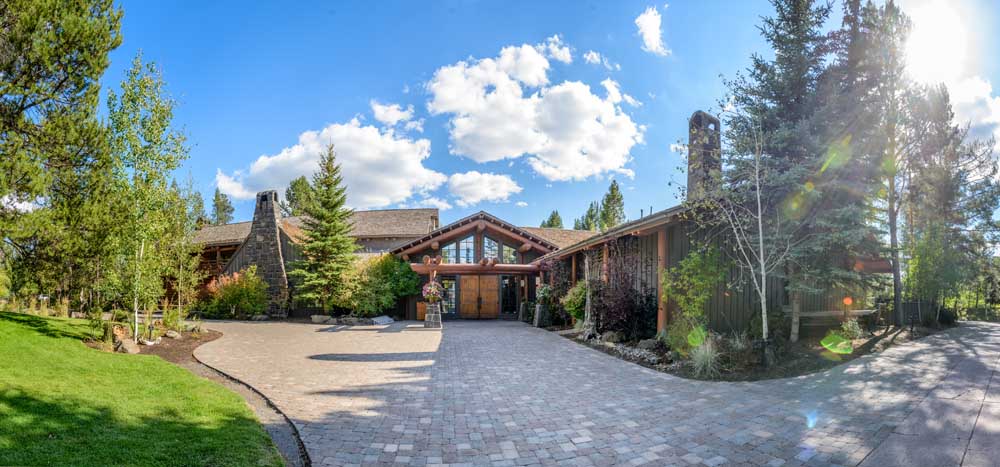Flashback
Published 12:00 am Friday, September 5, 2014

- Sunriver Resort’s Great Hall today and in the 1940s (at right).Above photo by Kevin Prieto
John Gray died in 2012, but his unique vision for a community integrated into its natural environment lives on in Sunriver.
Gray, along with Portland attorney Donald McCallum, purchased the future site of Sunriver in 1965. Their goal: a resort community with a limited number of home sites seamlessly blended into its natural surroundings. Now, as Sunriver nears its 50th anniversary, Gray’s original goals for the site have been fully realized.
Trending
But who was John Gray? If you ask around Sunriver, people know his name — maybe they even connect it in a casual way with the development of Sunriver — but not his broader legacy. And that’s just the way he liked it. While flashier reformers filled the newspaper pages, Gray quietly set about changing Oregon behind the scenes, one step at a time.
Gray was born in Ontario, Ore., in 1909, near the border with Idaho. He grew up, however, in Corvallis, moving there with his mother when he was 5 years old shortly after his father passed away. Gray attended Oregon State University, where he graduated in 1940, then enlisted in the Army during World War II.
Meanwhile, at the future site of Sunriver, a few miles south of Bend, the U.S. Army began construction of Camp Abbot. Built as an Engineer Replacement Training Center (E.R.T.C.) — the third such center in the nation — Camp Abbot was intended to train army personnel for combat engineer operations. Enlisted men learned how to build roads, construct bridges, execute demolitions and defend themselves from enemy attacks, according to Sunriver Resort documents. Camp Abbot opened in May 1943, with the arrival of 10,000 recruits ready for training.
After processing approximately 90,000 troops during the next year, Camp Abbot closed in June 1944 as the war on the European front began to diminish. By the end of the summer, all of the military buildings were demolished, except the Officer’s Club, a magnificent structure built out of 511 logs.
Gray, meanwhile, returned from WWII and enrolled in business school at Harvard University. After completing his education out east, Gray returned to Oregon where he became one of the first employees of the Oregon Saw Chain Manufacturing Company.
Within a few years, Gray took a controlling interest in the company and steered it through an enormously successful period of time in Oregon timber history. Gray made a great deal of money, and he soon turned his numerous talents into other arenas, particularly residential and resort development.
Trending
Gray’s first project was Salishan, a beautiful resort community on the central Oregon coast. After launching Salishan, Gray turned his attention inland to Central Oregon.
The U.S. government, meanwhile, had sold Camp Abbot to the Hudspeth Land & Livestock Company of Prineville. The company used the former army camp to graze livestock for 20 years. The gradually deteriorating Officer’s Club was even used to house cattle.
In 1965, the Hudspeth family, after a brief flirtation with designing a planned community on the site, sold the entirety of Camp Abbot to Gray and his business partner McCallum. At the time, the 5,484 acres of Camp Abbot were valued at $750,000 and generated $2,000 in annual property taxes for Deschutes County.
Gray and McCallum hired the San Francisco architectural firm Skidmore, Owings and Merrill to create a master plan for their central Oregon resort community. Gray and McCallum named the area “Sunriver” after two of its prominent natural features: abundant, year-round sunshine, and a gently flowing river.
Gray and McCallum detailed a plan for a resort community with a finite number of homesites, complete municipal services (police, fire, emergency, medical), a central lodge for community activities, and a resort modeled after European hotels. But Gray’s most important consideration was that the entire site be built in tune with its beautiful natural surroundings.
“John Gray was a man with a vision for development well ahead of his time,” said Tom O’Shea, managing director of Sunriver Resort. “[Gray] envisioned a place where both residents and visitors could come together to enjoy the natural resources of Central Oregon in a way that would preserve those resources for many generations to come.”
And this was one of Gray’s trademark development legacies. A moderate Republican with a passion for conservation and the environment, Gray firmly believed in – and helped develop – Oregon’s progressive land-use planning laws.
Sunriver’s first homesite sold in 1968, the same year that the former Officer’s Club was restored and refurbished into the Great Hall, a central gathering placing for the new community. By the time John Wayne and Katherine Hepburn arrived at Sunriver to film “True Grit” in 1975, the population had grown to 361 people serviced by a newspaper, post office, church, country store and gas station. And the rest is history.
Gray, meanwhile, launched two more major development projects: Skamania Lodge in the Columbia River Gorge and John’s Landing in Portland.
Gray sold his timber company – since renamed Omark – in 1984, for $267 million. Gray’s share of the cut was $74 million. He devoted the rest of his life to numerous philanthropic causes, giving freely and widely of his fortune. Major recipients of his charitable endeavors included Reed College, OMSI, Oregon Public Broadcasting, Habitat for Humanity, Oregon Health & Science University, Portland State University, REACH and The Lands Trust Alliance.
Gray and his wife Betty, longtime residents of Portland, formed the John Gray Family Foundation in 1997, which has since donated $100 million to Oregon nonprofits. John died in 2012 at age 94. Betty preceded him in death in 2003. Their daughter, Joan, resides in Eugene and continues to serve on the foundation’s board.
A more palpable memory of Gray’s legacy, however, lives on in Sunriver, where a resort community integrated into its natural environment continues to thrive today.
“Sunriver Resort strives to maintain John’s vision in every aspect of operations, be it the creation of guest lodging, recreational amenities or golf course operations (with an Audubon designation), and even in the development of the Crosswater and Caldera Springs communities,” said O’Shea.
“We are extremely fortunate and grateful to be the heirs to the legacy Mr. Gray created.”








